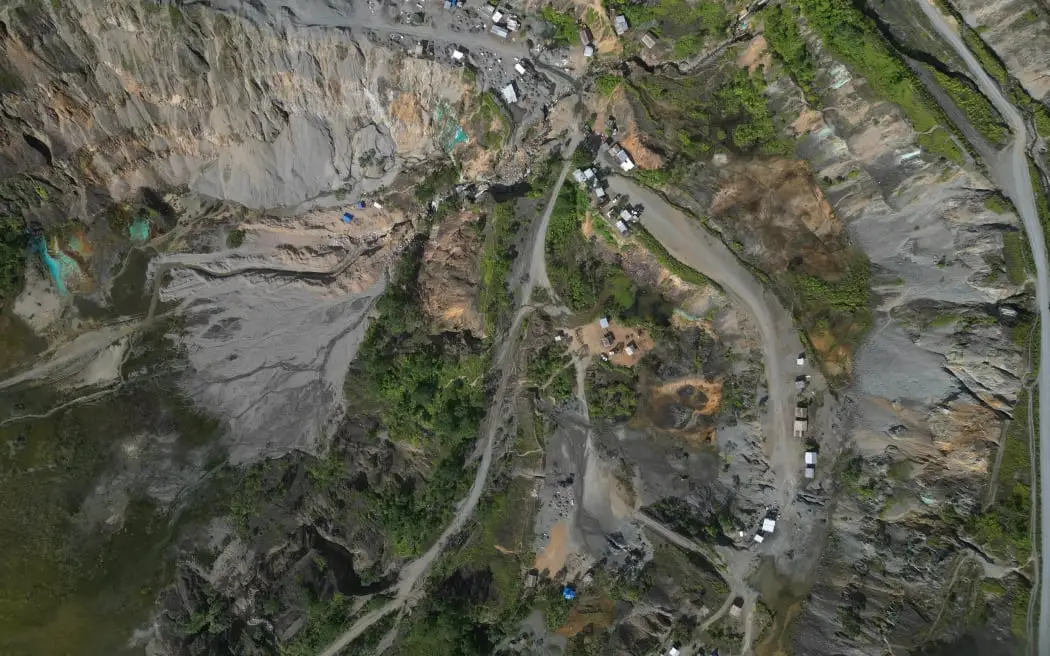The Devastating Legacy of the Panguna Gold Mine in Papua New Guinea
The autonomous region of Bougainville, located in Papua New Guinea, was once home to one of the world’s largest copper and gold mines. The Panguna mine, operated between 1972 and 1989, released nearly a billion tonnes of mine waste directly into the Jaba-Kawerong river, leaving behind a trail of environmental devastation and social unrest.
The Tragic History of the Panguna Mine
During its operation, the Panguna mine was notorious for its poor working conditions, low wages, and lack of benefits for local workers. The mine’s profits were also skewed in favor of foreign companies, leaving the local population with limited economic opportunities.
The environmental and social impacts of the mine became unbearable, leading to an uprising by local people that forced the mine to shut down. This, in turn, triggered a brutal decade-long civil war between rival factions vying for control over the mine’s assets.
A New Investigation Reveals Ongoing Devastation
In 2021, Rio Tinto agreed to fund a two-year investigation into the legacy impact of the Panguna mine. The study, conducted by environmental firm Tetra Tech Coffey, aimed to assess the most serious areas of concern to communities affected by the mine.
The report, now available, confirms life-threatening risks to communities, including treacherous quicksand, collapsing levees, and flooded homes and gardens. The investigation also revealed that children are being forced to wade through mine waste just to reach school.
A Call for Action from the Communities Affected
Local leaders and residents are demanding that Rio Tinto takes immediate action to address the ongoing devastation caused by the mine. They are calling for a commitment to remediation, including the establishment of an independently managed fund to help with long-term rehabilitation efforts.
Theonila Roka Matbob, lead complainant and member of parliament for the Ioro constituency where the mine is located, said: “We never chose this mine, but we live with its consequences every day, trying to find ways to survive in the wasteland that has been left behind.”
A New Era of Accountability
The Panguna mine’s legacy impact assessment serves as a wake-up call for companies operating in environmentally and socially sensitive regions. The report validates what communities have been saying for decades: that the ongoing environmental and human rights disaster caused by the mine must be addressed urgently.
Keren Adams, legal director at Human Rights Law Centre, said: “The Panguna mine has left them living with an ongoing environmental and human rights disaster. There are strong expectations in Bougainville that Rio Tinto will now take swift action to help address the impacts and dangers communities are living with.”
A Path Forward
Rio Tinto now has a critical opportunity to demonstrate its commitment to meeting its human rights and environmental obligations. The company must prioritize areas of acute need and serious public safety risks, establish an independently managed fund for long-term rehabilitation efforts, and undertake formal reconciliation with the affected communities.
As Keren Adams noted, “This is a defining moment for Rio Tinto’s social license to operate. We welcome the company’s constructive engagement and commitment to the impact assessment process so far. Rio Tinto now has a critical opportunity to demonstrate that it is serious about meeting its human rights and environmental obligations and committing to remediation.”
Only through swift action can Rio Tinto begin to repair the damage caused by the Panguna mine. The future of Bougainville’s communities depends on it.

0 Comments